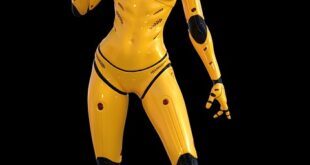Top 10 Benefits of Human-Machine Teamwork
1. Enhanced Efficiency and Productivity
When humans work hand in hand with machines, the combination results in remarkable efficiency and enhanced productivity. Machines can handle repetitive tasks with precision and speed, enabling humans to focus on more complex and creative aspects of their work. This collaboration allows for overall faster project completion and increased output levels, leading to business growth and development.
2. Error Reduction and Quality Assurance
By utilizing machine capabilities, human-machine teamwork ensures a reduction in human errors. Machines can analyze data with accuracy and identify potential mistakes or flaws more efficiently than humans alone. This partnership guarantees better quality control, leading to higher-quality outcomes, satisfied customers, and a stronger reputation for your business.
3. Improved Decision-Making Processes
Working collaboratively, humans and machines offer a broader perspective on complex decision-making processes. Machines can quickly crunch vast amounts of data and provide valuable insights, while humans contribute by considering qualitative aspects and exercising judgment. This synergy enables teams to make informed and well-rounded decisions, leading to smarter and more successful outcomes.
4. Creative Problem-Solving Techniques
The combination of human and machine intelligence has tremendous potential for creative problem-solving. Humans possess intuitive and adaptive thinking, while machines excel at processing vast amounts of data and recognizing patterns. By harnessing these complementary strengths, teams can develop innovative solutions that may not have been accessible otherwise, leading to breakthroughs in various domains.
5. Increased Workplace Safety
Human-machine collaboration offers immense benefits in workplaces by enhancing safety measures. Machines can perform physically demanding or hazardous tasks, reducing the risk of injuries for humans. They also come equipped with safety protocols that can detect and mitigate potential risks, alerting humans to protect them from harm. This partnership ensures a secure working environment and promotes employee well-being.
6. Streamlined Operations and Logistics
Coordinating tasks between humans and machines optimizes operational efficiency and logistics. Machines can automate mundane and time-consuming activities, allowing humans to focus on higher-value tasks. Moreover, by integrating machines into supply chains and workflows, organizations can streamline processes, reduce bottlenecks, and meet customer demands quickly and accurately.
7. Extended Capabilities and Skill Enhancement
Working alongside machines encourages skill enhancement and expands human capabilities. Humans can learn new technologies and gain expertise in rapidly evolving fields, facilitating professional growth. Moreover, machines can assist humans by providing real-time information, improving problem-solving skills, and supporting complex computations. This collaboration enables individuals to develop versatile skillsets, making them more valuable assets to their organizations.
8. Accelerated Research and Development
Human-machine teamwork plays a crucial role in advancing research and development efforts. Machines can analyze massive data sets, perform experiments, and model complex scenarios, accelerating the pace of discovery and innovation. By integrating human creativity and critical thinking, interdisciplinary teams can make groundbreaking advancements in various industries and expedite progress in fields such as healthcare, technology, and science.
9. Enhanced Customer Experience and Satisfaction
Human-machine collaboration improves the overall customer experience and satisfaction levels. Machines and AI-driven technologies enable personalized recommendations and timely responses, effectively addressing customer needs and preferences. Human interaction complements this by offering empathy, understanding, and adapting to complex customer situations. This combination ensures exceptional service delivery and fosters long-term customer loyalty.
10. Empowerment and Transformational Opportunities
Collaboration between humans and machines empowers individuals and opens up new transformative opportunities. Automation of repetitive tasks allows employees to focus on more fulfilling, creative, and strategic work. Human-machine teamwork enables job roles to become increasingly dynamic, embracing continuous learning, and adaptability. This collaborative environment fosters personal growth, innovation, and job satisfaction.
 Mind Uncharted Explore. Discover. Learn.
Mind Uncharted Explore. Discover. Learn.


